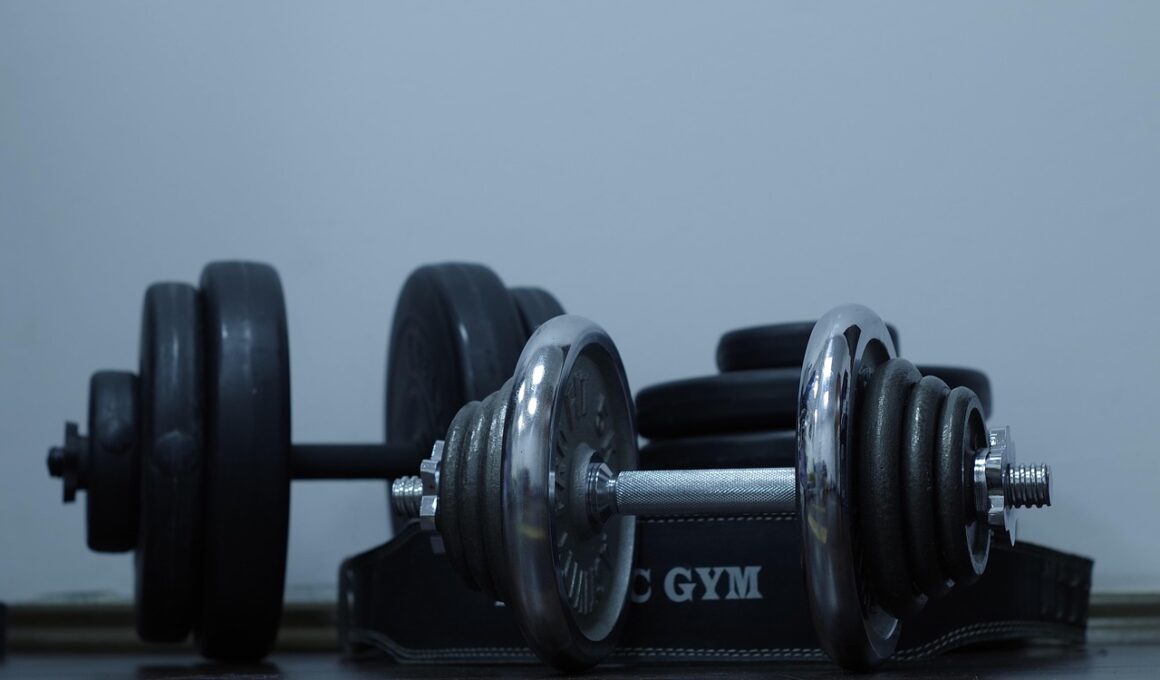Iron’s Critical Role in Sports Performance and Oxygen Transport
Iron is a crucial trace mineral that plays an essential role in various biochemical functions, especially in relation to sports performance. It is significantly involved in the production of hemoglobin, the protein in red blood cells that carries oxygen from the lungs to the rest of the body. Insufficient iron levels can lead to fatigue, decreased endurance, and reduced overall athletic performance. Athletes, particularly those involved in endurance sports, are at a higher risk of developing iron deficiency due to increased iron requirements. These higher demands arise from enhanced blood volume and intensity of training regimens. Additionally, certain types of diets, such as vegetarian or vegan diets, may lack adequate iron intake, further complicating the issue. Therefore, monitoring iron levels is crucial for both amateur and professional athletes. Besides energy production, iron is also integral for muscle function and recovery. Low iron levels can impair an athlete’s performance and slow recovery, making it vital to include iron-rich foods in their diet or consider supplementation when necessary for adequate performance and well-being.
Iron comes in two different forms: heme iron and non-heme iron. Heme iron is found in animal products, such as red meat, fish, and poultry, while non-heme iron is found primarily in plant-based foods like lentils, beans, and fortified cereals. Heme iron is absorbed more efficiently in the body compared to non-heme iron. Therefore, athletes following a plant-based diet may need to pay additional attention to their iron intake to ensure they meet their nutritional needs. Strategies to enhance non-heme iron absorption include consuming vitamin C-rich foods alongside iron sources. Foods like oranges, peppers, and strawberries can significantly boost non-heme iron absorption. Conversely, substances like calcium, tannins, and phytates can inhibit iron absorption, necessitating careful meal planning for athletes concerned about their iron levels. Awareness of these factors is essential for optimizing dietary choices. Regular testing for iron status through serum ferritin tests can help identify deficiencies early, allowing timely intervention. This proactive approach is crucial for maintaining both performance and long-term health in athletic populations, thereby supporting peak performance in competitive sports.
Symptoms of Iron Deficiency
Iron deficiency can manifest in a variety of symptoms that can hinder athletic performance. Common signs include chronic fatigue, decreased strength, and diminished endurance levels. Athletes might experience increased heart rates during routine activities and greater feelings of exhaustion after workouts. Additionally, iron deficiency can lead to pale skin and a general feeling of weakness. It’s imperative for athletes to recognize these symptoms early to ensure they can address the deficiency promptly. Ignoring these signs can result in more severe complications, including iron-deficiency anemia, which can significantly impact workout capacity and recovery times. This condition happens when blood levels drop significantly, causing substantial decreases in energy levels and motivation. Moreover, anxiety and decreased cognitive functions may also appear, which can affect an athlete’s focus and decision-making on the field or court. Thus, it’s essential for athletes to maintain a balanced diet, monitor their health closely and consult with nutrition professionals to prevent such issues. Performing regular health check-ups is a proactive measure that athletes should incorporate into their regimes to maintain optimal health and peak performance.
Athletes can address iron deficiency through dietary modifications and, in some cases, supplements. Including more iron-rich foods in one’s diet can enhance overall iron intake efficiently. Recommended food sources include red meat, poultry, fish, leafy greens, legumes, iron-fortified cereals, and nuts. Supplementation may also be beneficial, particularly for athletes who cannot meet their iron needs through food alone. However, it is vital to consult with a healthcare professional before beginning any supplementation. Excessive iron intake can lead to toxicity and adverse health effects. A registered dietitian can help assess individual dietary needs and recommend appropriate changes to improve iron status. Moreover, timing meals around training sessions and including an adequate range of nutrients can support optimal performance. For instance, consuming a balanced meal with a good source of iron hours before physical activity can help prepare the body for demanding exercise. Additionally, staying hydrated is essential for overall athletic performance and can assist in improving energy levels. Finding the right balance between nutrition and performance will help athletes achieve their goals while maintaining their health.
Iron-Rich Foods for Athletes
Incorporating iron-rich foods into an athlete’s daily diet is essential. Some of the most effective sources of heme iron include red meats such as beef, lamb, and pork. These options not only provide readily absorbable iron but also other critical nutrients such as protein and B vitamins. For those who prefer plant-based sources of iron, options such as spinach, kidney beans, lentils, chickpeas, and tofu are excellent choices. Iron-fortified cereals provide a convenient way to boost iron intake. When it comes to balancing iron intake, variety is key. Combining sources of heme and non-heme iron can enhance overall iron absorption and optimize nutritional benefits. Additionally, including vitamin C-rich foods like citrus fruits, bell peppers, and broccoli can significantly improve non-heme iron absorption. Maintaining a balanced diet that caters to individual needs fosters better health and performance. Athletes should aim to include a wide range of nutrient-dense foods to support optimal recovery and performance. Incorporating these foods regularly will sustain energy levels and enhance overall performance in training and competitions.
The timing of iron intake can also affect performance and recovery in athletes. Consuming iron-rich foods post-workout can aid in recovery, as iron is essential for muscle repair and energy restoration. Eating iron sources in conjunction with meals that are rich in vitamin C maximizes absorption and reduces the likelihood of deficiency. Furthermore, athletes should monitor their performance during training and competitions closely to assess their readiness. This includes understanding how their body responds to increased training loads, as energy demands for athletes can vary significantly. Structured meal plans that include nutrient timing can assist in coordinating optimal iron intake around training schedules. In cases where food sources alone might not meet the recommended levels, supplementing with iron may be necessary. However, proper monitoring should occur to prevent over-supplementation. Athletes must prioritize balance, ensuring they are not only getting enough iron but also have a holistic approach to nutrition. By being aware of these factors and making informed choices, athletes can improve their performance outcomes significantly.
Conclusion: Prioritizing Iron for Athletic Success
In conclusion, iron plays a critical role in sports performance and overall health. Athletes must recognize the significance of maintaining optimal iron levels to enhance their energy, endurance, and recovery. Addressing iron deficiency through dietary adjustments and professional guidance is essential for achieving peak performance. Regularly monitoring iron status can help detect deficiencies early, allowing for timely nutritional interventions. Athletes should prioritize a well-balanced diet rich in iron from various sources to meet their individual nutritional needs effectively. This comprehensive focus on nutrition will translate into improved performance, greater energy levels, and faster recovery times. Furthermore, as athletes navigate their training regimes, awareness of dietary requirements will empower them to make better choices that support their health and performance. Understanding the differences in iron types, absorption enhancers, and food sources will contribute significantly to every athlete’s nutritional education. Ultimately, prioritizing iron in one’s diet is pivotal for long-term success in sports and overall well-being, facilitating optimal execution in sports endeavors and encouraging a sustainable approach to athletic health.
Nutrition is a vital aspect of sports that goes beyond calorie counting and energy provisions.


